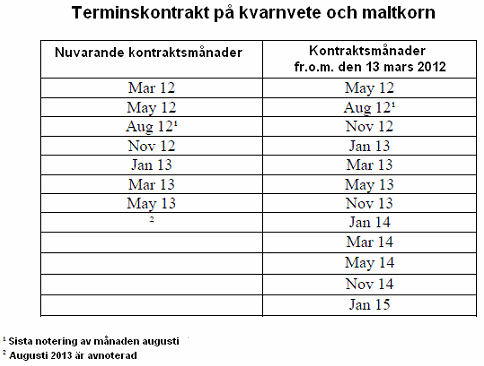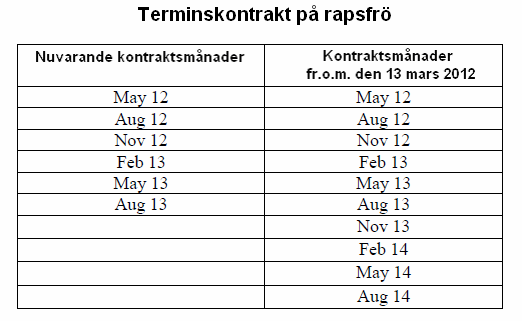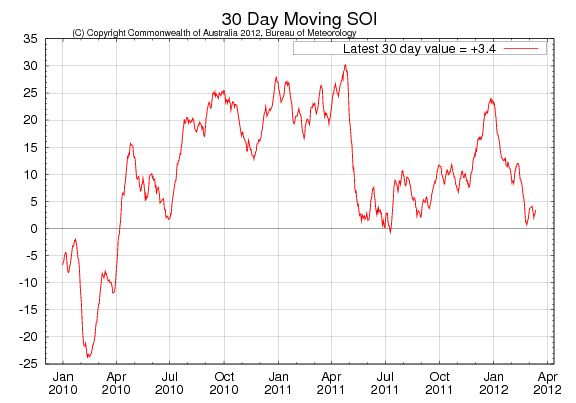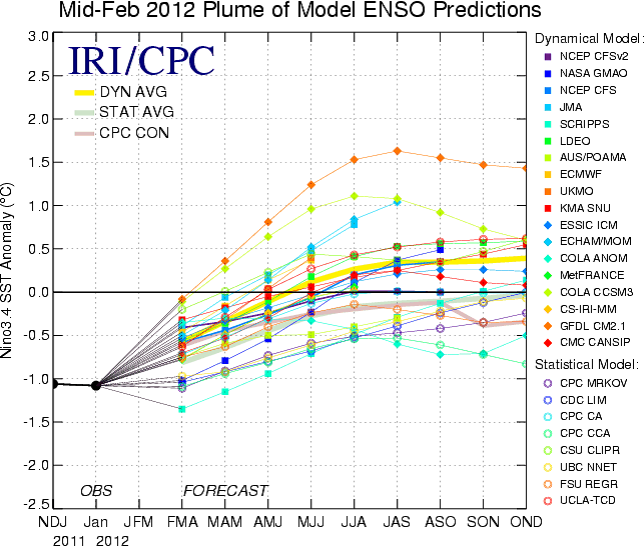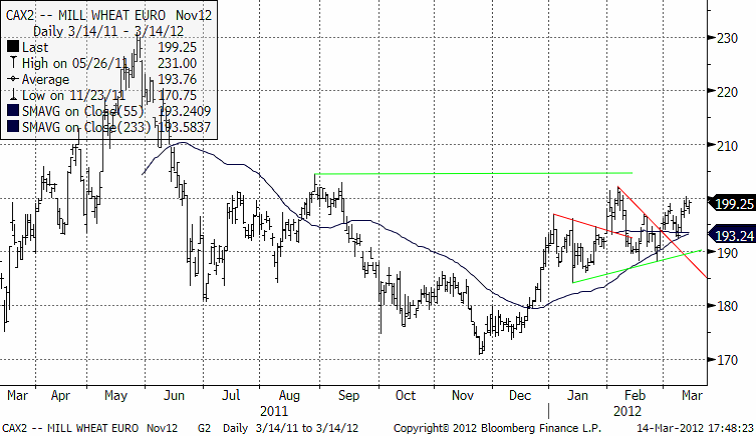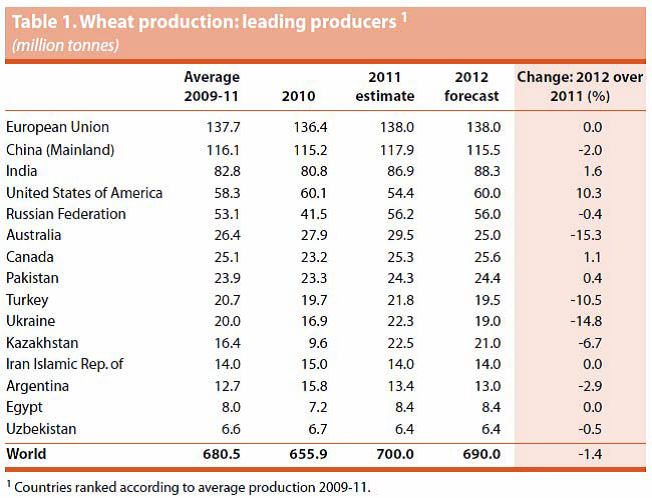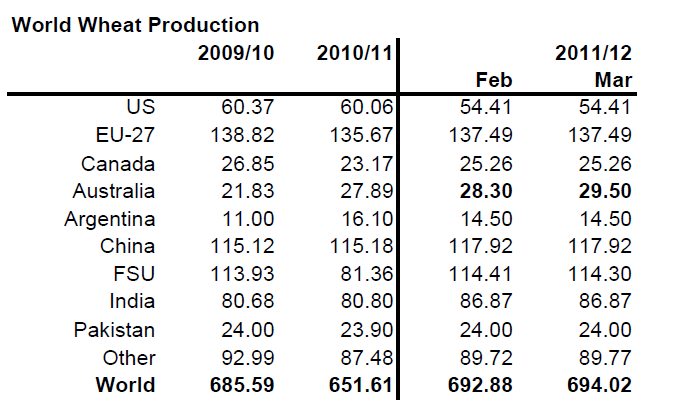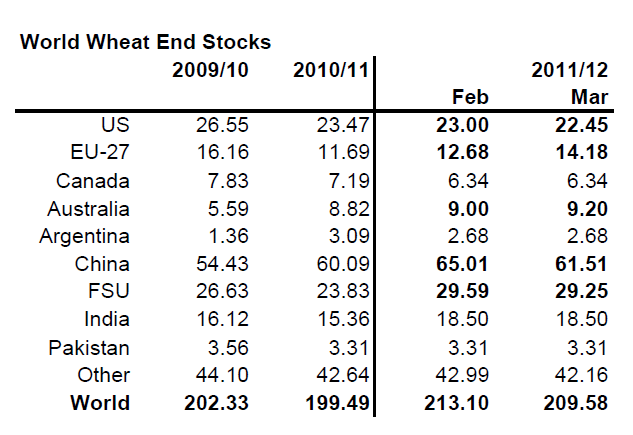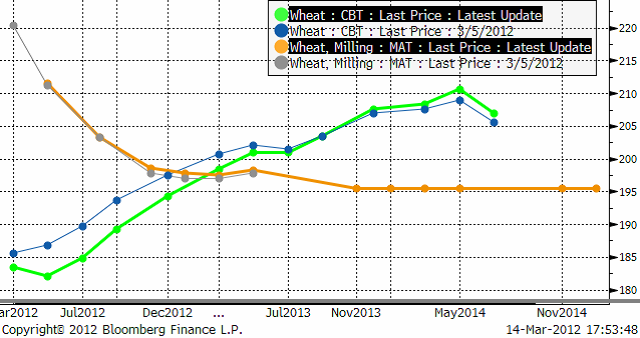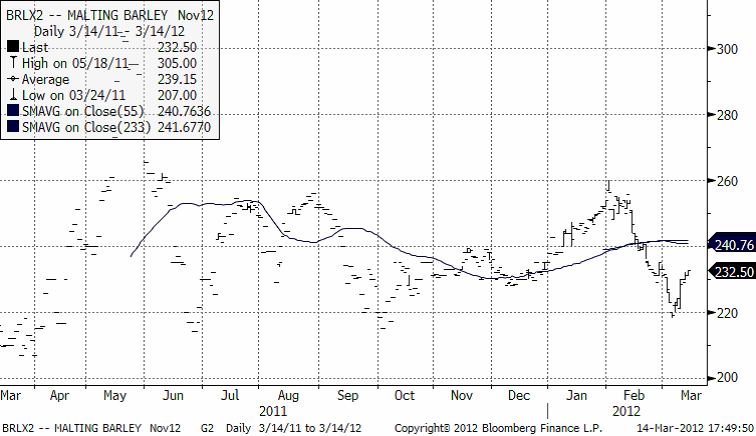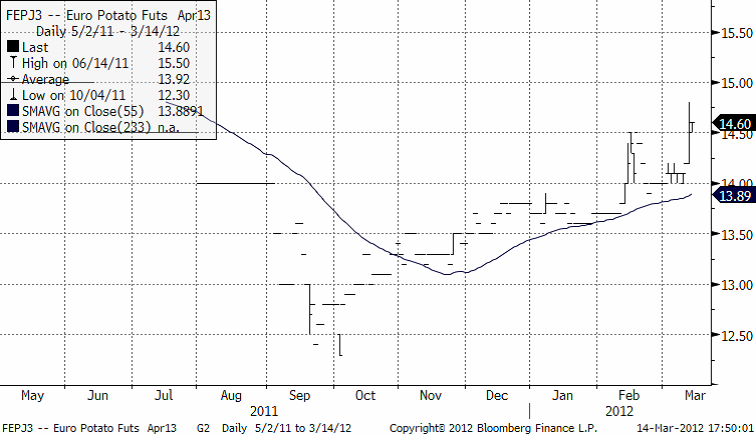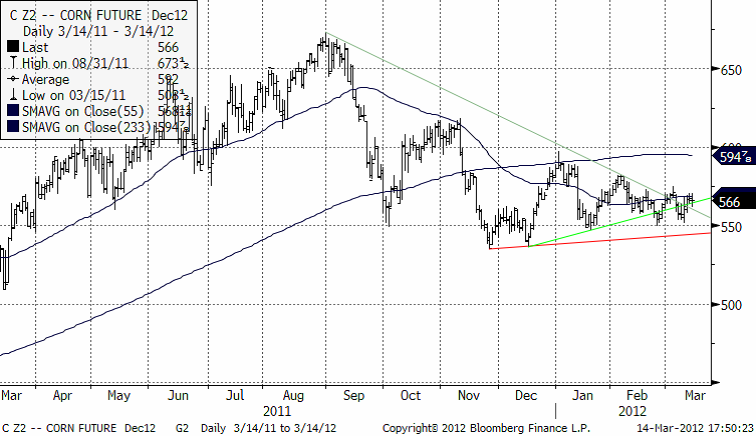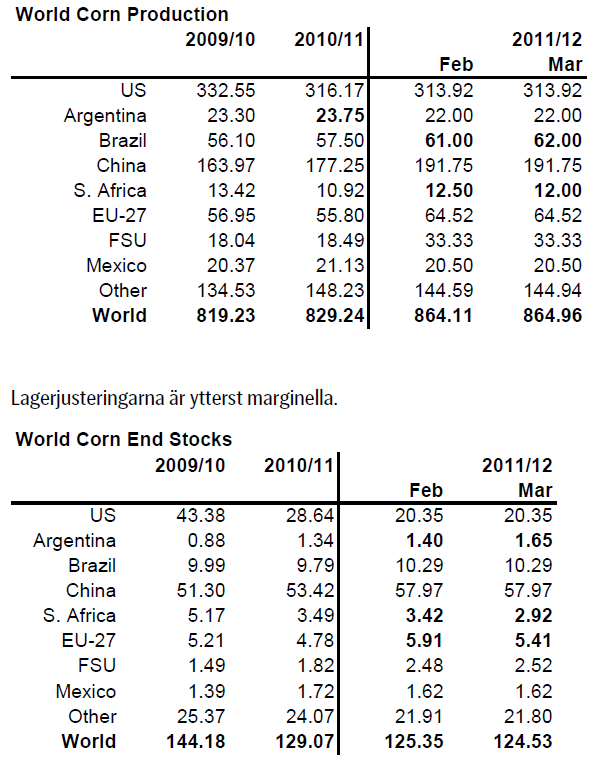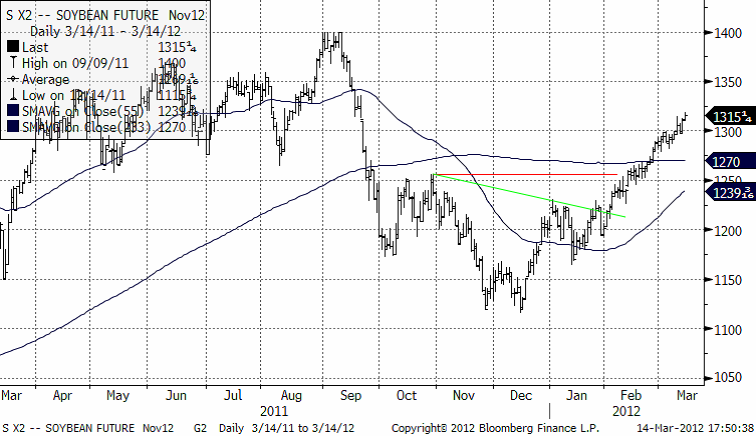Analys
SEB – Jordbruksprodukter, vecka 11 2012
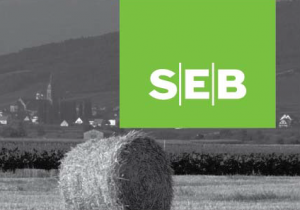 Den senaste veckan har priserna rört sig uppåt för några jordbruksprodukter och nedåt för andra. Raps och sojabönor tillhör vinnarna. WASDE-rapporten förra veckan gav den här typen av signal. För majs var rapporten totalt ointressant.
Den senaste veckan har priserna rört sig uppåt för några jordbruksprodukter och nedåt för andra. Raps och sojabönor tillhör vinnarna. WASDE-rapporten förra veckan gav den här typen av signal. För majs var rapporten totalt ointressant.
Nyhet! Förbättringar med fler kontrakt på Matif
Den europeiska börsen Euronext (Matif) har utökat antalet kontraktsmånader för terminer och optioner på kvarnvete, maltkorn, rapsfrö och majs med fr.o.m. tisdagen den 13 mars 2012. En annan förändring som sker är också att kontraktsmånaden augusti för kvarnvete och maltkorn kommer att försvinna. Augusti 2012 blir därmed den sista noterade augusti månaden för dessa två råvaror. För kvarnvete och maltkorn kommer antalet kontraktsmånader att utökas från nuvarande 8 till 12 enligt nedan:
För rapsfrö kommer antalet kontraktsmånader att utökas från nuvarande 6 till 10 enligt nedan:
Detta gör det möjligt att implementera en ”trappstegsstrategi” för att hantera prisvariation mellan odlingsåren och därmed avsevärt sänka intäktsvariationen på spannmåls- och oljeväxtodling mellan åren (utan att behöva använda Chicagovetekontrakten).
Odlingsväder
La Niña fortsätter att hålla sig kring noll. Även i veckan som gick rapporteras från Australiens meteorologiska byrå att ENSO-förhållandena är normala.
Nedan ser vi ensembleprognosen från amrikanska Climate Prediction Center. Den är gjord i mitten av februari, och den visade då att La Niña skulle klinga av och försvinna till neutrala ENSO-förhållanden till juni. Detta tycks nu, som vi sett, redan inträffat.
Vete
Novemberterminen på Matif testar återigen 200 euro per ton. Det finns så gott om motstånd på ovansidan att det är svårt att tänka sig att priset med lätthet skulle kunna gå uppåt. Statistiken är något ”bullish”, men inte överdrivet så. WASDE:n var något litet ”bullish”, medan senare FAO-statistik är något ”bearish”.
USA visade återigen sin konkurrenskraft på världsmarknaden efter att för tredje gången tagit hem anbudet från Egypten i förra veckan då GASC köpte ytterligare 60 000 ton amerikanskt vete. Priset på det amerikanska vetet låg klart under de priser som erbjöds från Kanada, Frankrike och Ukraina, även med de extra kostnaderna för frakt över Atlanten inräknat. [ USA; 259$/t + frakt 27.75$/t från Venus I Kanada; 267.75$/t från Louis Dreyfus I Frankrike; 286.89$/t från Cargill I Ukraina; 277.45$/t från Venus (exkluderad då den inte uppfyllde anbudets krav) ]
Den franska veteproduktionen kommer sannolikt att sjunka till 33.8 mt för 2011/12 från uppskattningsvis 35.7 mt under samma period året innan enligt France AgriMer, vilket också är något lägre än föregående månads prognos på 34 mt. De estimerar också att exporten av vete till ickeeuropeiska länder kommer att sjunka till 8.6 mt, en minskning från 12.9 mt under 2010/11, och exporten till europeiska länder kommer att falla till 6.5 mt jämfört med 6.7 mt förra säsongen. Tysklands produktion av vete (alla sorter) för 2012 förväntas öka med 6.3 procent till 24.2 mt jämfört med 22.7 mt under 2011.
Ukrainas regering justerar ned sin prognos för landets vete produktion för 2012 till 14 mt, från en tidigare förväntad produktion på nästan 16 mt, samtidigt som man betonar att de förväntade skördevolymerna kommer att täcka den inhemska efterfrågan på kvarnvete i Ukraina, vilket är i nivå med nästan 6 mt. Prognosen för landets spannmålsexport 2011/12 (juli-juni) justeras också ned med ca 20 procent, till 20-21 mt, till följd av att försäljningstakten har avtagit. Ukrainas premiärminister sa också att ”införande av någon form av kvoter (för spannmål) inte finns på agendan för 2012/13” och att landet kommer att ”få en genomsnittlig skörd som bör göra det möjligt för oss att lösa alla våra problem”.
Även analysföretagen UkrAgroConsult och ProAgro justerar också ned sina prognoser för Ukrainas vete produtkion till 13.8 mt resp 14.3 mt.
FAO’s första prognos över den globala vete produktionen för 2012 uppgår till 690 mt och blir därmed den näst högsta ur ett historiskt perspektiv. Jämfört med rekordåret 2011 är det en nedgång med 10 mt eller 1.4 procent men fortfarande en bra bit över genomsnittet för de senaste fem åren. Utsikterna för 2012 års globala vete produktion ser dock gynnsamma ut. Även om odlingen har ökat eller förväntas öka i många länder i år till följd av fortsatt starka priser, så förväntas en återgång till mer normala avkastningar i områden där rekordnivåer uppnåddes förra året. Men det är fortfarande tidigt att estimera den globala spannmålsproduktionen.
I Europa, förväntas arealen för vete att öka marginellt till strax över genomsnittet för de senaste fem åren och utifrån ett antagande om normala säsongsmässiga förhållanden för resten av perioden förväntas produktionen bli i stort sett oförändrar från 2011 års nivå på 138 mt.
I Ryssland rapporteras grödorna vara i gott skick med ett i allmänhet tilläckligt snötäcke som skyddat grödorna under en period av riktigt låga temperaturer, utom i vissa södra delar av landet. Sådden av höstvete har ökat markant jämfört med föregående år till följd av goda förutsättningar vid sådd. En viss ökning av vårvete väntas också. Under antagandet normala odlingsförhållanden för resten av säsongen, förväntas produktionen bli i stort sett oförändrad jämfört med förra årets relativt höga nivå på 56 mt.
I Ukraina däremot, är utsikterna för höstvete mindre gynnsamma med tanke på en minskad sådd till pga torkan i höstas och en ökad utvintring till följd av en period med kraftig kyla i kombination med begränsat snötäcke. Även om en viss del av bortfallet förväntas ersättas med vårvete, så uppskattas produktionen av vete i detta skede att falla från förra årets höga nivå.
I Nordamerika, visar tidiga indikationer på att veteproduktionen i USA pekar på en återhämtning på 10 procents jämförts med förra årets produktion som låg under genomsnittet. Årets produktion förväntas uppgå till 60 mt. Mars och april är den period då största delen av vetet i Kanada sås och arealen förväntas öka betydligt då lantbrukare åter sår en stor del av arealen som förra våren var för blöt för att kunna användas.
I Asien är utsikterna för veteproduktionen, där skörden börjar i april, i huvudsak gynnsamma för de flesta producerande länder. I Kina förväntas inga större förändringar i arealen, men produktionen kan komma att falla något, vilket skulle vara en återgång till en mer normal avkastning. I Indien och Pakistan väntas rekordskördar vilket bl.a. speglar en fullgod tillgång på vatten. I den asiatiska CIS är Kazakstan den största producenten och merparten av grödorna där sås i vår. Givet att ett stort överskott kvarstår sedan förra årets rekordskörd av vete, så förväntas årets vete areal att minska till förmån för andra grödor och därmed också en minskad produktion av vete.
I Mellanöstern rapporteras utsikterna för höstvete att vara goda och för Nordafrika är tidiga prognoser blandade. Utsikterna i Egypten är goda där grödorna till stor del är bevattnade och vattentillgången god medan det är värre för Marocko där sådden påverkades av det torra vädret och där betydande regn behövs snart för att förhindra ett betydande bortfall. På det södra halvklotet sker merparten av sådden av vete senare i år. I Australien, där sådden börjar i april, pekar tidiga indikationer på ytterligare en god skörd, även om den troligtvis inte når upp till 2011 års rekordskörd.
Precis efter förra veckans veckobrev publicerade USDA sin WASDE-rapport för mars månad. Den visade ingen förändring. Kicki trodde först att de skickat ut februaris siffror av misstag, därför att det var nästan ingenting som skiljde (vi tittar först och främst på USA:s siffror, eftersom det är det största exportlandet och det är export och importmarknaden som avgör världsmarknadspriset). Men totalt för vete blev det en liten uppjustering av väntad skörd globalt sett:
Ökad konsumtion framförallt i Kina (vi har tidigare nämnt wheat-for-feed), leder till lägre utgående globala lager.
Detta gav en liten skjuts uppåt på priset. Inte så mycket för Kinas konsumtion, som för att utgående lager i USA väntas bli lägre. För vetepriset såsom världsmarknadspris är det USA som i egenskap av största exportör, är den helt avgörande marknaden. Vi såg fallande priser på terminer med kort löptid i USA, medan terminskurvan i Europa är helt oförändrad de senaste sju börsdagarna:
Maltkorn
Novemberkontraktet på maltkorn rekylerade upp i veckan som gick.
Potatis
Priset på industripotatis för leverans nästa år steg ganska ordentligt i veckan som vi ser i nedanstående kursdiagram.
Majs
Majspriset har rört sig ovanligt lite den senaste veckan. WASDE-rapporten för en vecka sedan var likaledes ointressant.
USDA gjorde inga stora förändringar på hur mycket som man tror kommer att skördas i år. Man höjde skörden i Brasilien med 1 mt och sänkte Sydafrika med 500 kt. Vi noterar att man lämnat Argentina helt oförändrat från februaris rapport.
Om två veckor kommer lagerstatistikrapporten från USDA och den kanske blir något mer intressant.
Sojabönor
Novemberkontraktet gick efter en väldigt liten tvekan genom 13 dollar. Nästa motstånd finns på 1350 cent. Det är ovanligt med en så här pass lång och stadig trend uppåt, men när ska man gå emot?
WASDE-rapporten förra veckan visade lägre produktion av sojabönor. Globalt sänktes prognosen med 6.4 mt. Brasiliens skörd sänktes med 3.5 mt, Argentina 1.5 mt och Paraguay 1.4 mt. USDA:s skördeestimat ligger faktiskt lite lägre än vad Conab har.
Utgående lager sänktes 3 mt, främst i Argentina och Brasilien. Pga de redan låga utgående lagren i USA har man på USDA valt att inte sänka USA:s lager.
Raps
Den brittiska rapsexporten är fortsatt stark, och uppgår hittills för säsongen 2011/12 (juli-juni) till ca 500 000 ton, vilket redan överstiger de 435 311 ton som exporterades under 2011/11. Tyskland är den viktigaste marknaden för den brittiska rapsexporten och då Tysklands egen rapsskörd kollapsade med 30 procent pga av dåligt väder under 2011 så finns en fortsatt stark efterfrågan på import av raps som nu brittiska lantbrukare fortsätter att dra nytta av.
Dock förväntas Tysklands produktion av höstraps att öka under 2012 till 4.8 mt jämfört med 3.8 mt år 2011 enligt tidiga prognoser.
Vissa farhågor finns också hur den kraftiga kylan som har varit i Europa kommer att påverka rapsen. Det femåriga genomsnittet för EU’s rapsproduktion ligger på 19.5 mt och prognosen för 2012 från Europeiska kommissionen ligger nu på 20.2 mt. Andra privata analysfirmor uppskattar att produktionen kan bli så låg som 18 mt.
Europa står för ungefär en tredjedel av världens rapsproduktion, vilket innebär att bortfall i produktionen kan ha en stor inverkan på den internationella marknaden och vilket skulle ge ett visst indirekt stöd till den kanadensiska canolan. Även om inte Kanada exporterar mycket raps direkt till Europa, så skulle med stor sannolikhet exporten från Svartahavs-länderna och Australien till Europa öka och därmed skulle Kanada möta en minskad konkurrens på den asiatiska marknaden från dessa länder.
Nedan ser vi kursdiagrammet för novemberkontraktet. När 440 euro bröts fortsatte haussen under mycket kraftig handel. Det var säkert många som inte köpt tillbaka sålda kontrakt på 400 och det tvångsstängs antagligen en del kontrakt på en del konton nu.
Vi tycker att priset är högt, men marknaden är stark, och 440-nivån bröts. Därför har vi en neutral vy.
Gris
Majkontraktet som vi säljrekommenderade för en två veckor sedan har fortsatt att falla. Vi trodde för en vecka sedan att den kunde gå ner till 92, men kraften i nedgången har avtagit och om prisnedgången når 94 är det nog bra så.
[box]SEB Veckobrev Jordbruksprodukter är producerat av SEB Merchant Banking och publiceras i samarbete och med tillstånd på Råvarumarknaden.se[/box]
Disclaimer
The information in this document has been compiled by SEB Merchant Banking, a division within Skandinaviska Enskilda Banken AB (publ) (“SEB”).
Opinions contained in this report represent the bank’s present opinion only and are subject to change without notice. All information contained in this report has been compiled in good faith from sources believed to be reliable. However, no representation or warranty, expressed or implied, is made with respect to the completeness or accuracy of its contents and the information is not to be relied upon as authoritative. Anyone considering taking actions based upon the content of this document is urged to base his or her investment decisions upon such investigations as he or she deems necessary. This document is being provided as information only, and no specific actions are being solicited as a result of it; to the extent permitted by law, no liability whatsoever is accepted for any direct or consequential loss arising from use of this document or its contents.
About SEB
SEB is a public company incorporated in Stockholm, Sweden, with limited liability. It is a participant at major Nordic and other European Regulated Markets and Multilateral Trading Facilities (as well as some non-European equivalent markets) for trading in financial instruments, such as markets operated by NASDAQ OMX, NYSE Euronext, London Stock Exchange, Deutsche Börse, Swiss Exchanges, Turquoise and Chi-X. SEB is authorized and regulated by Finansinspektionen in Sweden; it is authorized and subject to limited regulation by the Financial Services Authority for the conduct of designated investment business in the UK, and is subject to the provisions of relevant regulators in all other jurisdictions where SEB conducts operations. SEB Merchant Banking. All rights reserved.
Analys
Tightening fundamentals – bullish inventories from DOE

The latest weekly report from the US DOE showed a substantial drawdown across key petroleum categories, adding more upside potential to the fundamental picture.

Commercial crude inventories (excl. SPR) fell by 5.8 million barrels, bringing total inventories down to 415.1 million barrels. Now sitting 11% below the five-year seasonal norm and placed in the lowest 2015-2022 range (see picture below).
Product inventories also tightened further last week. Gasoline inventories declined by 2.1 million barrels, with reductions seen in both finished gasoline and blending components. Current gasoline levels are about 3% below the five-year average for this time of year.
Among products, the most notable move came in diesel, where inventories dropped by almost 4.1 million barrels, deepening the deficit to around 20% below seasonal norms – continuing to underscore the persistent supply tightness in diesel markets.
The only area of inventory growth was in propane/propylene, which posted a significant 5.1-million-barrel build and now stands 9% above the five-year average.
Total commercial petroleum inventories (crude plus refined products) declined by 4.2 million barrels on the week, reinforcing the overall tightening of US crude and products.


Analys
Bombs to ”ceasefire” in hours – Brent below $70

A classic case of “buy the rumor, sell the news” played out in oil markets, as Brent crude has dropped sharply – down nearly USD 10 per barrel since yesterday evening – following Iran’s retaliatory strike on a U.S. air base in Qatar. The immediate reaction was: “That was it?” The strike followed a carefully calibrated, non-escalatory playbook, avoiding direct threats to energy infrastructure or disruption of shipping through the Strait of Hormuz – thus calming worst-case fears.

After Monday morning’s sharp spike to USD 81.4 per barrel, triggered by the U.S. bombing of Iranian nuclear facilities, oil prices drifted sideways in anticipation of a potential Iranian response. That response came with advance warning and caused limited physical damage. Early this morning, both the U.S. President and Iranian state media announced a ceasefire, effectively placing a lid on the immediate conflict risk – at least for now.
As a result, Brent crude has now fallen by a total of USD 12 from Monday’s peak, currently trading around USD 69 per barrel.
Looking beyond geopolitics, the market will now shift its focus to the upcoming OPEC+ meeting in early July. Saudi Arabia’s decision to increase output earlier this year – despite falling prices – has drawn renewed attention considering recent developments. Some suggest this was a response to U.S. pressure to offset potential Iranian supply losses.
However, consensus is that the move was driven more by internal OPEC+ dynamics. After years of curbing production to support prices, Riyadh had grown frustrated with quota-busting by several members (notably Kazakhstan). With Saudi Arabia cutting up to 2 million barrels per day – roughly 2% of global supply – returns were diminishing, and the risk of losing market share was rising. The production increase is widely seen as an effort to reassert leadership and restore discipline within the group.
That said, the FT recently stated that, the Saudis remain wary of past missteps. In 2018, Riyadh ramped up output at Trump’s request ahead of Iran sanctions, only to see prices collapse when the U.S. granted broad waivers – triggering oversupply. Officials have reportedly made it clear they don’t intend to repeat that mistake.
The recent visit by President Trump to Saudi Arabia, which included agreements on AI, defense, and nuclear cooperation, suggests a broader strategic alignment. This has fueled speculation about a quiet “pump-for-politics” deal behind recent production moves.
Looking ahead, oil prices have now retraced the entire rally sparked by the June 13 Israel–Iran escalation. This retreat provides more political and policy space for both the U.S. and Saudi Arabia. Specifically, it makes it easier for Riyadh to scale back its three recent production hikes of 411,000 barrels each, potentially returning to more moderate increases of 137,000 barrels for August and September.
In short: with no major loss of Iranian supply to the market, OPEC+ – led by Saudi Arabia – no longer needs to compensate for a disruption that hasn’t materialized, especially not to please the U.S. at the cost of its own market strategy. As the Saudis themselves have signaled, they are unlikely to repeat previous mistakes.
Conclusion: With Brent now in the high USD 60s, buying oil looks fundamentally justified. The geopolitical premium has deflated, but tensions between Israel and Iran remain unresolved – and the risk of missteps and renewed escalation still lingers. In fact, even this morning, reports have emerged of renewed missile fire despite the declared “truce.” The path forward may be calmer – but it is far from stable.
Analys
A muted price reaction. Market looks relaxed, but it is still on edge waiting for what Iran will do

Brent crossed the 80-line this morning but quickly fell back assigning limited probability for Iran choosing to close the Strait of Hormuz. Brent traded in a range of USD 70.56 – 79.04/b last week as the market fluctuated between ”Iran wants a deal” and ”US is about to attack Iran”. At the end of the week though, Donald Trump managed to convince markets (and probably also Iran) that he would make a decision within two weeks. I.e. no imminent attack. Previously when when he has talked about ”making a decision within two weeks” he has often ended up doing nothing in the end. The oil market relaxed as a result and the week ended at USD 77.01/b which is just USD 6/b above the year to date average of USD 71/b.

Brent jumped to USD 81.4/b this morning, the highest since mid-January, but then quickly fell back to a current price of USD 78.2/b which is only up 1.5% versus the close on Friday. As such the market is pricing a fairly low probability that Iran will actually close the Strait of Hormuz. Probably because it will hurt Iranian oil exports as well as the global oil market.
It was however all smoke and mirrors. Deception. The US attacked Iran on Saturday. The attack involved 125 warplanes, submarines and surface warships and 14 bunker buster bombs were dropped on Iranian nuclear sites including Fordow, Natanz and Isfahan. In response the Iranian Parliament voted in support of closing the Strait of Hormuz where some 17 mb of crude and products is transported to the global market every day plus significant volumes of LNG. This is however merely an advise to the Supreme leader Ayatollah Ali Khamenei and the Supreme National Security Council which sits with the final and actual decision.
No supply of oil is lost yet. It is about the risk of Iran closing the Strait of Hormuz or not. So far not a single drop of oil supply has been lost to the global market. The price at the moment is all about the assessed risk of loss of supply. Will Iran choose to choke of the Strait of Hormuz or not? That is the big question. It would be painful for US consumers, for Donald Trump’s voter base, for the global economy but also for Iran and its population which relies on oil exports and income from selling oil out of that Strait as well. As such it is not a no-brainer choice for Iran to close the Strait for oil exports. And looking at the il price this morning it is clear that the oil market doesn’t assign a very high probability of it happening. It is however probably well within the capability of Iran to close the Strait off with rockets, mines, air-drones and possibly sea-drones. Just look at how Ukraine has been able to control and damage the Russian Black Sea fleet.
What to do about the highly enriched uranium which has gone missing? While the US and Israel can celebrate their destruction of Iranian nuclear facilities they are also scratching their heads over what to do with the lost Iranian nuclear material. Iran had 408 kg of highly enriched uranium (IAEA). Almost weapons grade. Enough for some 10 nuclear warheads. It seems to have been transported out of Fordow before the attack this weekend.
The market is still on edge. USD 80-something/b seems sensible while we wait. The oil market reaction to this weekend’s events is very muted so far. The market is still on edge awaiting what Iran will do. Because Iran will do something. But what and when? An oil price of 80-something seems like a sensible level until something do happen.
-

 Nyheter3 veckor sedan
Nyheter3 veckor sedanMahvie Minerals växlar spår – satsar fullt ut på guld
-

 Nyheter4 veckor sedan
Nyheter4 veckor sedanUppgången i oljepriset planade ut under helgen
-

 Nyheter4 veckor sedan
Nyheter4 veckor sedanLåga elpriser i sommar – men mellersta Sverige får en ökning
-

 Analys3 veckor sedan
Analys3 veckor sedanA muted price reaction. Market looks relaxed, but it is still on edge waiting for what Iran will do
-

 Nyheter3 veckor sedan
Nyheter3 veckor sedanJonas Lindvall är tillbaka med ett nytt oljebolag, Perthro, som ska börsnoteras
-

 Nyheter3 veckor sedan
Nyheter3 veckor sedanOljan, guldet och marknadens oroande tystnad
-

 Analys4 veckor sedan
Analys4 veckor sedanVery relaxed at USD 75/b. Risk barometer will likely fluctuate to higher levels with Brent into the 80ies or higher coming 2-3 weeks
-

 Nyheter3 veckor sedan
Nyheter3 veckor sedanDomstolen ger klartecken till Lappland Guldprospektering


